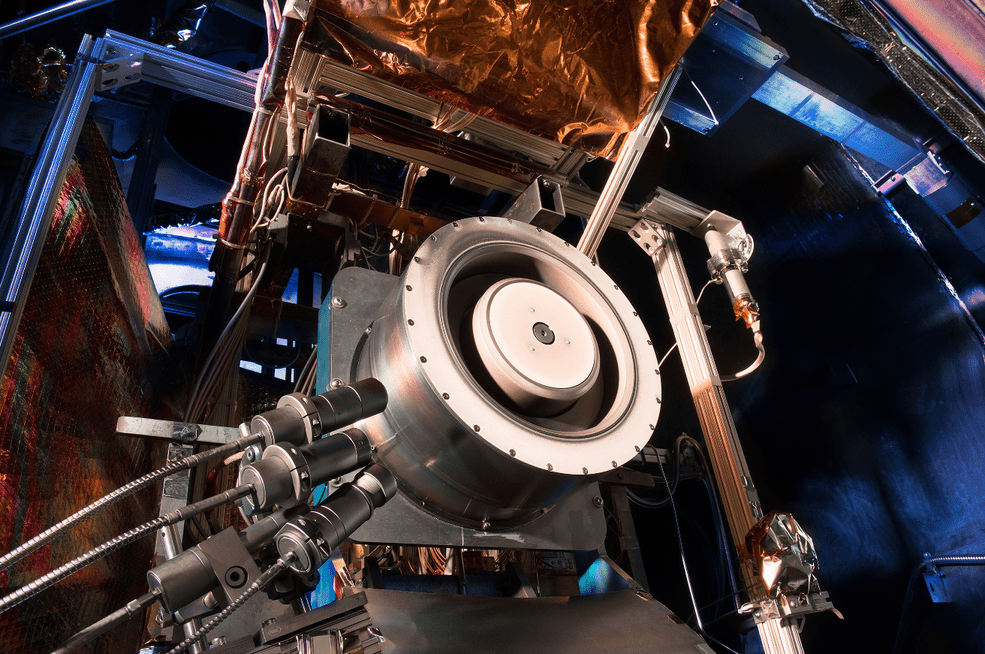A company called Aerojet Rocketdyne has won a $67 million contract from NASA to design and develop an advanced electric propulsion system that could power complex missions to asteroids and even to Mars.

Advanced solar electric propulsion will be needed for future human expeditions into deep space, including to Mars. Shown here is a 13-kilowatt Hall thruster being evaluated at NASA’s Glenn Research Center in Cleveland. Hall thrusters trap electrons in a magnetic field and use them to ionize the onboard propellant. It uses 10 times less propellant than equivalent chemical rockets.
Aerojet Rocketdyne is an American rocket and missile propulsion manufacturer, resulting from the merger of Aerojet and Pratt & Whitney. They’re not newcomers in the field, with the two companies having previously designed several engines which have been in use for decades on various shuttles. This will be one of their most ambitious projects to date, setting the stage for a deep space mission by 2020.
In the press release announcing this contract, Steve Jurczyk, associate administrator of NASA’s Space Technology Mission Directorate said:
“Development of this technology will advance our future in-space transportation capability for a variety of NASA deep-space human and robotic exploration missions, as well as private commercial space missions,” he said.
Aerojet Rocketdyne will build, test and deliver an engineering development unit for testing and evaluation in preparation for producing the follow-on flight units. The goal of the 36-month long project will be to develop and deliver an integrated electric propulsion system consisting of a thruster, power processing unit (PPU), low-pressure xenon flow controller, and electrical harness. The work will complement recent advanced solar array systems.
It’s not the first time NASA has approached this type of technology. They have been refining the development of spaceflight electric propulsion technology for more than five decades, with significant progress. The space agency is relying more and more on solar electric propulsion for long-term missions, but there still isn’t an available engine for deep space missions – this is what this contract wants to achieve.









